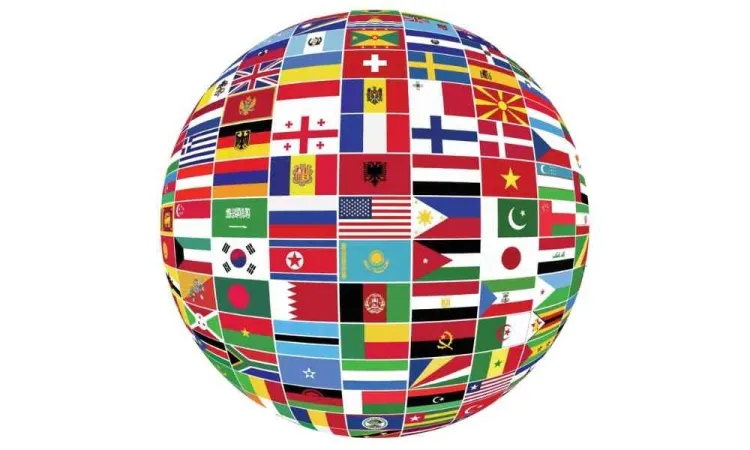The world is a vibrant tapestry of languages...!!!
The vast number of languages in the world highlights the incredible diversity of human expression and communication. Each language carries its own cultural and historical significance, contributing to the rich mosaic of human civilization.

The world is a vibrant tapestry of languages, each one narrating the unique stories of its speakers' history, culture, and identity. According to Ethnologue, a comprehensive reference that catalogs all the world’s known living languages, there are about 7,139 languages spoken globally today. This number, however, is ever-changing due to factors like language extinction, revitalization efforts, and the discovery of previously undocumented languages.
Language Distribution
Asia:
-
Languages: Around 2,300 languages.
-
Specials: Asia is the continent with the highest number of languages, with countries like India, Indonesia, and Papua New Guinea leading in linguistic diversity.
Africa:
-
Languages: Approximately 2,144 languages.
-
Specials: Africa hosts a wide variety of languages, many of which belong to the Niger-Congo, Afro-Asiatic, and Nilo-Saharan language families. Nigeria alone is home to over 500 languages.
Americas:
-
Languages: About 1,061 languages.
-
Specials: The Americas have a diverse linguistic landscape, with numerous indigenous languages, particularly in regions like the Amazon Basin. Unfortunately, many of these languages are endangered.
Europe:
-
Languages: Around 287 languages.
-
Specials: While Europe has fewer languages compared to other continents, it is known for its linguistic heritage, with Indo-European languages being predominant.
Oceania:
-
Languages: Approximately 1,313 languages.
-
Specials: Oceania, especially Papua New Guinea, is incredibly linguistically diverse. Papua New Guinea alone has about 840 languages, more than any other country.
Language Families
Languages are often grouped into families based on common ancestral roots. Here are some of the major language families:
Indo-European:
-
Languages: Includes English, Spanish, Hindi, Bengali, Portuguese, Russian, and many more.
-
Specials: This is one of the largest language families, with languages spoken by nearly half of the world's population.
Sino-Tibetan:
-
Languages: Includes Mandarin Chinese, Cantonese, Burmese, and Tibetan.
-
Specials: Mandarin Chinese is the most spoken language in the world, with over a billion speakers.
Niger-Congo:
-
Languages: Includes Swahili, Yoruba, Igbo, and Zulu.
-
Specials: This is the largest language family in Africa, with languages spoken by millions of people across the continent.
Afro-Asiatic:
-
Languages: Includes Arabic, Hebrew, Amharic, and Somali.
-
Specials: Arabic, with its many dialects, is a major language of this family, spoken across the Middle East and North Africa.
Austronesian:
-
Languages: Includes Indonesian, Tagalog, Maori, and Malagasy.
-
Specials: This family covers a vast area from Madagascar to Easter Island, demonstrating extensive maritime migration.
Language Endangerment and Revitalization
Many languages around the world are at risk of extinction. UNESCO estimates that half of the world’s languages could disappear by the end of the 21st century. Language endangerment is often caused by factors like globalization, urbanization, and the dominance of major languages like English and Mandarin.
However, efforts are being made to revitalize and preserve endangered languages. Indigenous communities, linguists, and governments are collaborating to document languages, create educational resources, and promote the use of these languages in daily life. Some successful revitalization efforts include:
-
Hawaiian: Once on the brink of extinction, Hawaiian is now taught in schools and used in media.
-
Maori: New Zealand has implemented policies to promote the Maori language, including bilingual education and media presence.
-
Welsh: Wales has seen a resurgence in the use of Welsh, with government support for bilingual signage, education, and broadcasting.
The Future of Languages
The future of the world's languages is influenced by factors such as technology, migration, and cultural exchange. Digital platforms and social media play a significant role in language preservation and evolution. While some languages may face challenges, others may adapt and thrive in the digital age.
Language learning apps, online dictionaries, and virtual communities allow speakers to connect and share their languages. Additionally, global movements to recognize and celebrate linguistic diversity help raise awareness about the importance of preserving languages.
The vast number of languages in the world highlights the incredible diversity of human expression and communication. Each language carries its own cultural and historical significance, contributing to the rich mosaic of human civilization. As we move forward, it is essential to value and protect this linguistic diversity, ensuring that future generations can continue to benefit from the wealth of knowledge and culture embedded in the world’s languages.
What's Your Reaction?

















